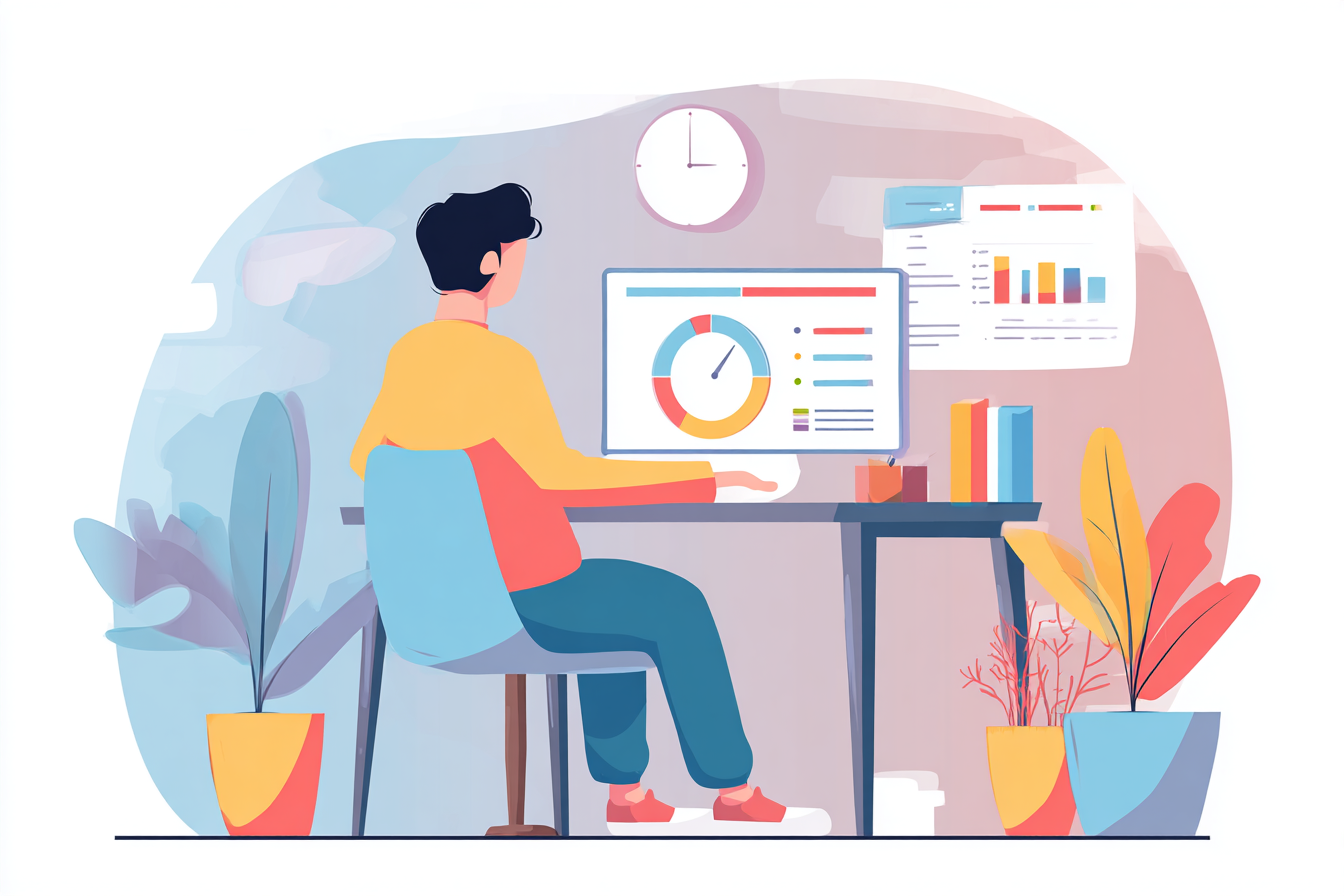In an age of massive data breaches and identity theft, many of us are offered tools like credit monitoring or credit protection to safeguard our finances. If you’ve had personal data exposed, and with billions of records breached in recent years, chances are you might wonder what these services actually do. Are they worth it? Is one better than the other?
We’ll break down the key differences between credit monitoring and credit protection, what each does (and doesn’t do), and how to decide what you actually need.
What Credit Monitoring Does (and Doesn’t Do)
Credit monitoring is an early warning system for your credit reports. It’s a service that continuously tracks activity on your credit files (from the major bureaus like Experian, Equifax, and TransUnion) and alerts you to changes or suspicious activity. For example, if someone tries to open up a new credit card in your name or there’s a sudden change in your account balances, a credit monitoring service can notify you via email, text, or app notification. This can give you a heads-up to investigate and take action quickly.
However, it’s critical to understand that credit monitoring is reactive, not preventive. In other words, it does not stop fraudulent activity from happening; it only lets you know after something odd shows up on your credit report. Think of it like a smoke alarm: it alerts you to a possible fire, but it doesn’t extinguish the flames. As one credit union put it, credit monitoring is a helpful tool, “but not a force field” around your identity. If a thief opens a loan in your name, you’ll get an alert, but the account may already exist; you’ll still need to clean up the mess.
Most credit monitoring services also offer guidance or support if identity theft does occur. Many companies will walk you through the recovery process, for instance, helping you place fraud alerts or report fraudulent accounts.
What Credit Monitoring Doesn’t Do
It doesn’t prevent new accounts from being opened, it doesn’t stop misuse of your existing credit cards or bank accounts, and it doesn’t automatically fix any problems it finds. It addresses detection, so you’re not in the dark if someone is misusing your credit. But on its own, it won’t actually block a determined fraudster.
Real-world example: Say a major retailer gets hacked and your personal data (Social Security number, etc.) is leaked. In response, the retailer offers you a year of free credit monitoring. A few months later, you receive an alert that a new auto loan inquiry hit your credit report, something you know you didn’t initiate. Thanks to credit monitoring, you caught this early. You can now contact the lender to alert them to the fraud and start sorting things out. The service did its job by alerting you quickly. But the account attempt wasn’t stopped; it was simply reported to you. This is why we say monitoring is an alarm system, not a lock on the door.
Do you need Credit Monitoring?
It depends on your situation and comfort level. If you’re diligent about checking your own credit reports and accounts, you can do much of this yourself for free (for example, by pulling your free credit reports periodically and reviewing them for unfamiliar accounts). Many banks and credit card issuers will also offer free alerts or credit score updates that notify you of changes. On the other hand, if you’ve been a victim of identity theft before or worry you might not catch things on your own, a credit monitoring service (especially one that watches all three bureaus) can provide peace of mind. Just remember that it’s an added watchdog, not a shield. Which brings us to credit “protection,” the more proactive side of the equation.
What Credit Protection Really Means (Prevention vs. Detection)
The term credit protection can be a bit confusing because it’s used in different ways. Generally, when people talk about credit protection in the context of identity theft, they mean active measures to prevent unauthorized use of your credit. The most powerful tool here is the credit freeze (also known as a security freeze). Think of a credit freeze as a sturdy lock on your credit report. When you freeze your credit, it blocks anyone from checking your credit report to open a new account, effectively stopping scammers from opening credit cards or loans in your name. Even you won’t be able to open a new credit card in your name unless you lift (“thaw”) the freeze with a secret PIN or password.
Putting a freeze on your credit is free by law in the U.S., and it doesn’t affect your credit score. You have to place it with each of the three major credit bureaus, but it’s not hard; you can do it online or by phone, and lift it whenever you need to apply for credit. Unlike monitoring, which merely alerts you after the fact, a freeze is preventative: with a freeze in place, nobody (not even a sneaky identity thief) can open a new account under your credit file. It’s like locking the door so the thief can’t get in at all.
Here are a few key points about credit freezes:
- It’s free. You can freeze and unfreeze (thaw) your credit at no cost, as often as needed. This was made possible by a 2018 federal law, so there’s no charge to use this protection.
- It’s flexible. If you need to apply for a loan or credit card, you can temporarily lift the freeze (often instantly via a website or app) and then reapply it afterward. Some people plan their freezes around major purchases—for instance, applying for a mortgage, then re-freezing once the accounts are opened.
- It’s effective. A freeze completely blocks new credit lines from being opened in your name. This is extremely useful if your Social Security number or other sensitive info has been compromised in a breach. Even if a scammer tries to use your data, lenders won’t approve new credit because they can’t access your report without your permission.
What about credit locks or fraud alerts? These are related credit protection tools. A fraud alert is basically a free notice you can add to your credit file that tells lenders to verify your identity more carefully before issuing credit. It’s easier to set up than a freeze (you only need to contact one bureau, and they notify the others), but it’s not foolproof—it just adds an extra step to verification. A credit lock is very similar to a freeze in that it blocks access to your credit report, but it’s usually offered as a convenience through credit bureau apps or paid services. The main difference is that locks can often be toggled on/off quickly via an app, and some come with extra features, such as alerts if someone attempts to pull your credit.
However, credit locks may carry a fee or require a subscription, whereas a freeze is legally free. In essence, all three (freeze, lock, and fraud alert) aim to prevent the creation of illegitimate new accounts; they are forms of “credit protection” in that sense.
What credit protection doesn’t do: While a freeze (or lock) is excellent at barring new credit accounts, it doesn’t protect against fraud on your existing accounts. For example, if someone steals your credit card number and runs up charges, a freeze won’t stop that (that’s where your card’s fraud monitoring and zero-liability policy protects you). Similarly, a credit freeze won’t stop non-credit identity theft, like someone using your Social Security number for employment, tax fraud, or medical services. It specifically addresses the problem of new credit account fraud. Also, remember that if you need to apply for credit and your file is frozen, you’ll have to temporarily lift the freeze—which is an extra step, though a quick one. Some find it a minor hassle, but it’s a small price to pay for security. In short, credit protection tools like freezes are a strong lock, but they aren’t a universal shield against every kind of identity misuse.
Real-world example: Imagine your wallet was stolen, and it had your Social Security card in it (tip: try not to carry that around!). To be safe, you decide to freeze your credit with all three bureaus. Later on, the thief tries to use your SSN and name to apply online for a personal loan. The lender attempts to pull your credit report as part of the application, but they can’t because it’s frozen. The application is denied before any new debt is created. In this scenario, your credit freeze directly prevented fraud from turning into a nightmare debt. You might never even know someone tried to open an account, because nothing will show up on your credit report. And that’s actually a success! The freeze quietly did its job in the background. (By contrast, if you only had credit monitoring, you wouldn’t stop the loan; you’d simply get alerted afterward that a new account or inquiry appeared, meaning you’d then have to deal with closing it and fixing any damage.)
Situations Where Each Makes Sense

Both credit monitoring and credit protection have their place, and they’re not mutually exclusive. Here’s a look at when each might be most useful:
After a Data Breach or Identity Theft Incident
If your personal info was exposed in a known breach or you’ve had identity theft issues, a credit freeze is often the first thing to do. The Federal Trade Commission (FTC) even says a freeze is “always a good idea” and especially important if your SSN has been compromised. Freezing your credit gives you immediate protection against new accounts being opened in your name. In these situations, credit monitoring can still help by alerting you to any fraud that may have occurred before the freeze or to any other odd changes (like someone trying to change your address on your credit file). Companies that suffer breaches often offer a year of free credit monitoring to victims, definitely take advantage of it, but don’t rely on it alone. As one credit union noted, monitoring alone “won’t cut it” as a defense. A freeze is the better line of defense to stop further damage. Consider using both: freeze your credit and use the monitoring service to catch any fallout from the breach.
When You’re Actively Seeking New Credit
If you’re about to apply for a mortgage, car loan, or new credit card, you might hold off on freezing your credit (since you know you’ll need lenders to access it). During this period, credit monitoring is very helpful; it will alert you if any unexpected inquiries or accounts show up while your file is unfrozen. You might also choose to place a fraud alert in the meantime, which is free and lasts one year, to warn lenders to be extra careful. Once you’ve finished applying for new credit, you can then freeze your reports for long-term protection. Remember, you can always request to lift the freeze when you need to apply for something, then put it back on afterward. If you’re frequently opening accounts (e.g., shopping for student loans or frequently switching credit cards for rewards), keeping your credit unfrozen is more convenient, but you’ll want to stay vigilant. At a minimum, use free monitoring tools (many credit cards and services like Credit Karma offer free credit monitoring) to keep an eye out for fraud while your credit is not frozen.
If You’re Not Planning to Borrow Soon
This is an ideal scenario to use a credit freeze. If you have no upcoming loan or credit card applications, there’s little downside to locking down your credit report preemptively. You can freeze your credit indefinitely—it stays in place until you decide to lift it. During this time, you might still use a credit monitoring service, but note that some services may not be able to pull your report while it’s frozen (since they’re third parties trying to access it). The good news is, if nothing is happening (thanks to the freeze), you’re not missing much by not having constant monitoring. Some people choose to forego paid monitoring once their credit is frozen, and instead just periodically check their own credit reports (which you can still request directly from each bureau or via AnnualCreditReport.com, even if you have to briefly lift the freeze for that purpose). Essentially, a freeze means you’ve prevented the big problems. You might sleep a little easier and not feel the need to pay for ongoing monitoring; it’s up to your peace of mind.
For General Credit Health and Peace of Mind
Even if identity theft isn’t a top concern, credit monitoring can be useful just to track your credit score and report over time. Many consumers use free services to receive alerts about score changes or new inquiries to stay on top of their credit profile. If an error occurs (say, a lender reports a late payment incorrectly), a monitoring alert can tip you off so you can fix it. In this sense, monitoring addresses not just fraud, but any surprise that hits your credit. It’s a bit like a credit score tracker. But again, you don’t necessarily have to pay for this; plenty of free options exist. Paid monitoring or identity theft protection services typically bundle more features (such as monitoring the dark web for your info, insurance coverage for identity theft losses, or help from restoration specialists if you become a victim). Those can be valuable features for some, but think of them as optional add-ons. The core protection for your credit — keeping thieves from opening accounts — still comes from freezing or locking your credit.
Protecting Your Family (Kids and Elders)
One often overlooked situation is protecting the credit of children or older adults in your care. Child identity theft is a real issue; one study found that 1 in 50 families with kids had experienced child ID fraud by 2022. Crooks target kids because they have clean credit histories, and the fraud might go undetected for years. If your child is under 18, they typically won’t have a credit report at all unless identity theft has already happened. You can actually freeze a minor child’s credit to prevent anyone from creating one in their name. This is a smart move if you’ve detected any fraudulent activity involving your child, or if their Social Security number was exposed. Likewise, for elderly family members who aren’t planning to open new credit accounts, a freeze can safeguard them from certain scams. In these cases, you, as a parent or guardian, can work with the credit bureaus to set up the freeze on the child’s or senior’s behalf. Credit monitoring services generally require a credit file to exist, so they’re less relevant for young kids who shouldn’t have one. The freeze is the heavyweight champion here for prevention.
Making the Right Choice: What Do You Actually Need?
Now for the million-dollar question: which service should you get, credit monitoring, credit protection, both, or neither? The answer will depend on your personal situation, but here are some clear recommendations:
- For most general consumers, free credit protection measures are the top priority. In plain terms: consider freezing your credit. It’s hard to beat the peace of mind that comes from knowing strangers can’t open new accounts in your name. This is especially true in today’s world of constant data breaches. A credit freeze is an effective, zero-cost way to actually prevent one of the worst outcomes of identity theft (fraudulent loans or credit cards). As a proactive step, it’s highly recommended that you not seek new credit. Think of it as locking your doors at night—a basic security step.
Use credit monitoring as a supplement, not a substitute. Credit monitoring has its perks, especially for catching problems early and helping with recovery if something does happen. We’re not saying it’s useless at all; we’re just saying it works best alongside preventive measures. You can take advantage of free monitoring services from banks or reputable free apps to get alerts on your credit activity. If you want more comprehensive coverage (such as identity theft insurance, dark web monitoring, etc.), you might opt for a paid identity theft protection service, which typically includes credit monitoring and those extras. However, ask yourself if you truly need those extras. Many people find that a freeze plus free monitoring tools does the job well enough. Why pay hefty monthly fees for insurance or services you may never actually need to use?
- On the other hand, if you know you wouldn’t handle identity theft resolution well on your own or you like having that safety net, a paid “credit protection” or ID theft protection plan could be worth it for you. Just go in with clear expectations: no service can 100% guarantee you won’t become a victim. They can only reduce the risk and help if something goes wrong.
- Be mindful of scams and over-sharing. Ironically, in seeking protection, you could expose yourself to new risks. Only sign up for credit monitoring or protection services from trustworthy, well-known companies. Scammers sometimes pose as credit protection offers, so do your due diligence. And think twice about the data you hand over; some services ask for a lot of personal information (bank account numbers, medical IDs, etc.) to monitor them. Giving out more sensitive data can backfire if that company isn’t rock-solid in security. The bottom line is to stay informed and cautious. Any legitimate service will never promise to “fix” your credit or remove accurate negative information. Beware of anyone who claims they can magically erase bad credit; that’s a red flag.
So, do you actually need both services? In a perfect world, you freeze your credit for prevention and add some monitoring for detection—that’s belt and suspenders. But if you have to choose, ask yourself: would you rather know about fraud after it happens, or stop it from happening in the first place? For most, stopping it (via a freeze) is the priority. At a minimum, freeze first, then use whatever monitoring you have available (free if possible) to keep an eye on things. Paid monitoring/protection plans are optional—great for some, unnecessary for others. Many experts suggest that money might be better spent on things like improving your financial security in other ways (such as building an emergency fund or investing in a good password manager).
Finally, remember that no solution is foolproof, but knowledge is power. Understanding what credit monitoring and credit protection offer helps you make an informed decision. Stay vigilant by reviewing your financial statements, using strong passwords, and don’t hesitate to freeze your credit if you want that extra layer of security. In summary, credit monitoring will alert you, while credit protection (freezes) will block the bad guys. Use them wisely, and you’ll be far better off than the average consumer who doesn’t bother with either. Here’s to keeping your credit—and your peace of mind—safe!
You might also be interested in: 10 Steps to Build Your Credit from Scratch






